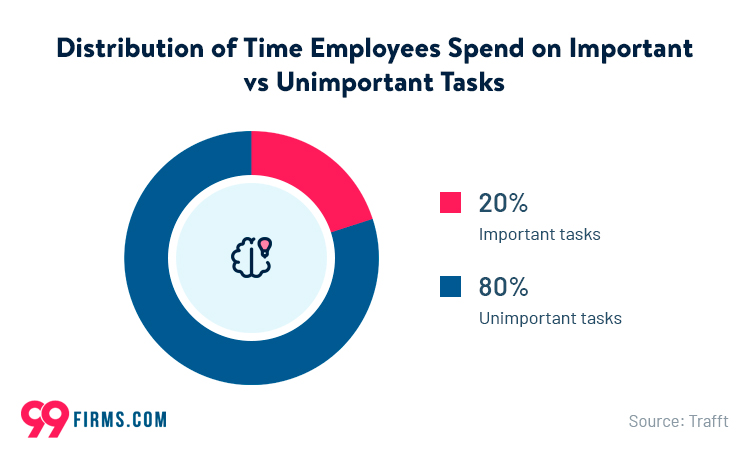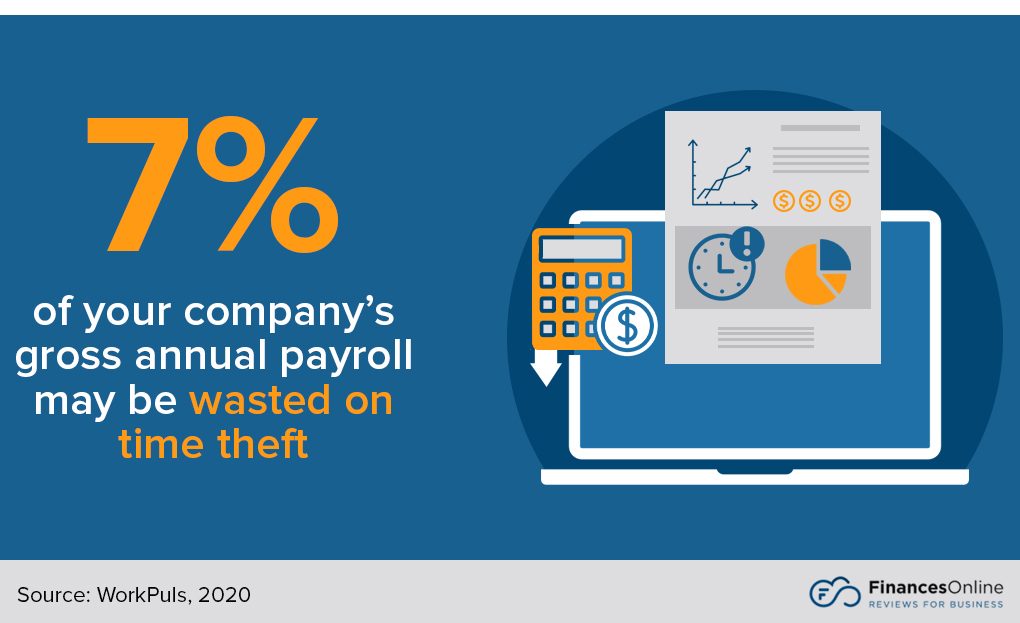Technology | 7 min read
8 Ways Time Tracking Can Boost Your Bottom Line

Most business owners know that time is money, and that’s why, in today’s fiercely competitive business landscape, effective time management has become a critical focus for companies striving to secure an edge. As industries rapidly evolve and customer expectations continue to rise, companies must navigate intricate challenges while maintaining operational excellence.
Not only does this require meticulous planning and seamless coordination, but it also demands a comprehensive understanding of how time influences every facet of operations. Businesses implementing time tracking solutions can optimize their time allocation, streamline processes, and ensure that every hour is utilized effectively. In this blog post, you’ll discover how time tracking can positively impact your company’s bottom line, increasing productivity, profitability, and overall success.
8 Benefits to Explore
The increased adoption of time tracking tools comes as no surprise, especially given the substantial benefits time tracking brings to businesses and how it supports an organization’s bottom line.
1. Increased Productivity
Only 60% or less of work time is actually spent productively. For businesses trying to increase profitability, that can translate into a significant loss of potentially valuable hours and additional revenue streams. By using a time-tracking solution, however, companies can closely monitor how employees are using their time and use that data to pinpoint inefficiencies so they can optimize processes. Armed with this data, businesses can safeguard work hours that might otherwise be lost, boost employee productivity, and, in the long run, achieve substantial cost savings.
2. Greater Efficiency
With a time tracking solution, businesses can also ensure that they’re making the best use of working hours by accurately monitoring and optimizing the allocation of employee time across various tasks and projects. By safely monitoring employees’ patterns, managers can make more informed decisions, better manage their workers, and redistribute workloads to balance team capacities.
Accurate time tracking not only allows organizations to set more realistic project timelines but also prevents overcommitment and reduces the risk of missed deadlines. As a result, teams can work cohesively, prioritize effectively, and achieve optimal output within the available time.

3. Employee Accountability
Using a time tracking tool is more than just keeping tabs on your employees. It helps encourage accountability. When employees know that they are being tracked, they’re more likely to stay focused, achieve more during the day, deliver high-quality work, and actively contribute to the organization’s success. Ultimately, employee accountability contributes to smoother operations, leading to a healthier bottom line for the business.
4. Better Resource Allocation
For businesses aiming to bolster their bottom-line growth, a time-tracking solution can accurately capture and analyze data on how employees spend their work hours, providing insights into resource utilization that help optimize allocation strategies. Proper resource allocation ensures that tasks and projects are appropriately staffed, preventing overburdening and enabling teams to work at their most productive capacity. This, in turn, translates into streamlined workflows, reduced wastage, and improved project completion rates.
In addition, with the right personnel and resources in place, businesses can respond promptly to market demands, new projects, or unexpected challenges. Subsequently, this agility contributes to increased customer satisfaction, the ability to capitalize on emerging trends, and a competitive edge in the market.
5. Optimized Scheduling
By leveraging historical data on factors such as employee availability, performance trends, and individual preferences, businesses can construct shift schedules that align with peak demand periods. With the right number of employees scheduled during times when customer demand is at its highest, service levels remain consistently high, customer satisfaction increases, and sales opportunities are maximized.
When businesses precisely match staff levels with demand, they can also curtail unnecessary labor expenditures. Time tracking prevents both overstaffing during slower hours and understaffing during busier times. In turn, businesses can avoid excessive wage expenses and reduce the need for costly overtime payments.
6. Helps Identify Areas for Improvement
Time tracking can reveal workflow bottlenecks so businesses can spot which areas need improvement. When businesses can easily detect operational inefficiencies, they can identify where time is being underutilized and deploy targeted strategies to fine-tune their operations. By analyzing the granular data on time allocation across tasks and projects, companies can see where work processes are delayed or where tasks are taking longer than necessary. This iterative process of improvement results in reduced costs, and ultimately, a more favorable impact on the company’s financial performance and bottom line.
7. Prevents Time Theft
While most employers tolerate occasional social chats or personal phone calls during work hours, employees who take advantage of excessive breaks can cause cumulative losses for a business. In addition, employees who are allowed to clock their own time might be more inclined to round up their hours, leaving employers to compensate for time not spent on tasks.
With a time tracking solution in place, businesses can not only curb time theft, but can also ensure employees remain fully engaged during their designated work hours. When employees are aware that they’re being tracked, they’re more likely to increase output and less likely to waste time, so it doesn’t negatively impact your bottom line.

8. Billing & Invoicing Accuracy
For businesses looking to bolster their bottom line, time tracking software can improve billing and invoicing practices by ensuring accuracy and transparency, resulting in stronger client relationships and optimized financial operations. With time tracking, organizations can eliminate the risk of underbilling or overcharging. Additionally, time tracking tools enable businesses to provide detailed breakdowns of the work accomplished and streamline the invoicing process, reducing administrative overhead and enabling faster billing cycles.
Track Time With Nowsta
Nowsta’s all-in-one platform gives you access to the most efficient and effective time-tracking tools for managing your hourly employees.
With Nowsta, you can gain real-time insights into employee hours spent on tasks, projects, and activities, identify operational bottlenecks, and fine-tune project management. As a result, you can elevate your company’s bottom line by increasing efficiency, improving productivity, and enhancing resource allocation, all of which collectively lead to optimized operations—and, ultimately, higher profitability.
To learn more about how Nowsta can help your business unlock its full potential, drive growth, and achieve long-term success, request a free demo today.